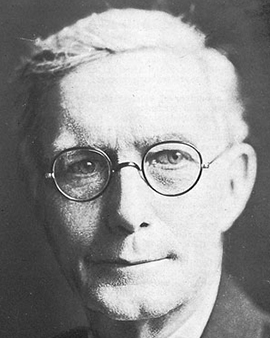When David Howard Hitchcock unpacked his wooden paint box, the view opened up to him far over the sea and the volcanic vegetation of the Hawaiian islands. The artist transformed the inner back wall of the opened wooden box into a portable painting.
Blue and purple, the sky extends behind the sparse bushes that rise from the brown landscape towards the passing clouds. Hitchcock, a descendant of missionaries in Hawaii, was born in Honolulu in 1861. His father was a lawyer, working in the legislature of the Hawaiian king. D. Howard, as his parents called him, completed elementary school at the Punahou School. The school that over a century later US President Barack Obama was also to attend. As a young man, Hitchcock left Hawaii to study art and painting at Oberlin College in Ohio, far from his home in the Pacific Ocean in the Midwest of the US motherland. There he also held his first exhibition. Soon after, his success earned him a place at the National Academy of Design in New York City.
Together with the Frenchman Jules Tavernier, the Scottish Constance Fredericka Gordon Cumming, the Japanese Ogura Yonesuke Itoh, the Australian Ambrose McCarthy Patterson, the New Zealander William Twigg-Smith and other, lesser known artists, David Howard Hitchcock is today considered part of the so-called "Volcano School". The "Volcano School" was a group of artists who painted erupting volcanoes in dramatic scenes of Hawaii. Their best works are watercolors that stylistically represent an attempt to combine the sublime European aesthetic of Romanticism with the naturalistic representation tradition of American landscape painting.
Glowing red lava from Hitchcock's painting "Halema'uma'u Eruption at Night" from 1917 burns itself into the eye of the beholder. From far above, but close enough to the site of the heated event, the artist has captured the eruption of the fire-breathing volcano. Two volcanoes on the island of Hawaii, Kilauea and Mauna Loa, were temporarily active in the 1880s and 1890s, when interest in the subjects of the "Volcano School" reached its peak. In order to get to Kilauea, the most frequently depicted volcano of the time, visitors at that time still had to accept a two to three-day journey on horseback.
Today, Hitchcock's works, described by art historians as testimony to a "small Hawaiian Renaissance", are exhibited at the Bishop Museum in Honolulu, the Boston Museum, the Oakland Museum and the Honolulu Academy of Arts, among others. David Howard Hitchcock died in Honolulu on January 1, 1943, after having personally witnessed the attack on Pearl Harbor in 1941.
×





.jpg)
.jpg)
.jpg)
.jpg)
.jpg)
.jpg)
.jpg)
.jpg)
.jpg)
.jpg)
.jpg)
.jpg)
.jpg)
.jpg)
.jpg)
.jpg)
.jpg)
.jpg)
.jpg)
.jpg)
.jpg)
.jpg)
.jpg)
.jpg)
.jpg)
.jpg)
.jpg)
.jpg)
.jpg)
.jpg)
.jpg)
.jpg)
.jpg)
.jpg)
.jpg)
.jpg)
.jpg)
.jpg)
.jpg)
.jpg)
.jpg)
.jpg)
.jpg)
.jpg)
.jpg)
.jpg)
.jpg)
.jpg)
.jpg)
.jpg)
.jpg)
.jpg)
.jpg)
.jpg)
.jpg)
.jpg)
.jpg)
.jpg)
.jpg)
.jpg)
.jpg)
.jpg)
.jpg)
.jpg)
.jpg)
.jpg)
.jpg)
.jpg)
.jpg)
.jpg)
.jpg)
.jpg)
.jpg)
.jpg)
.jpg)
.jpg)
.jpg)
.jpg)
.jpg)
.jpg)
.jpg)
.jpg)
.jpg)
.jpg)






